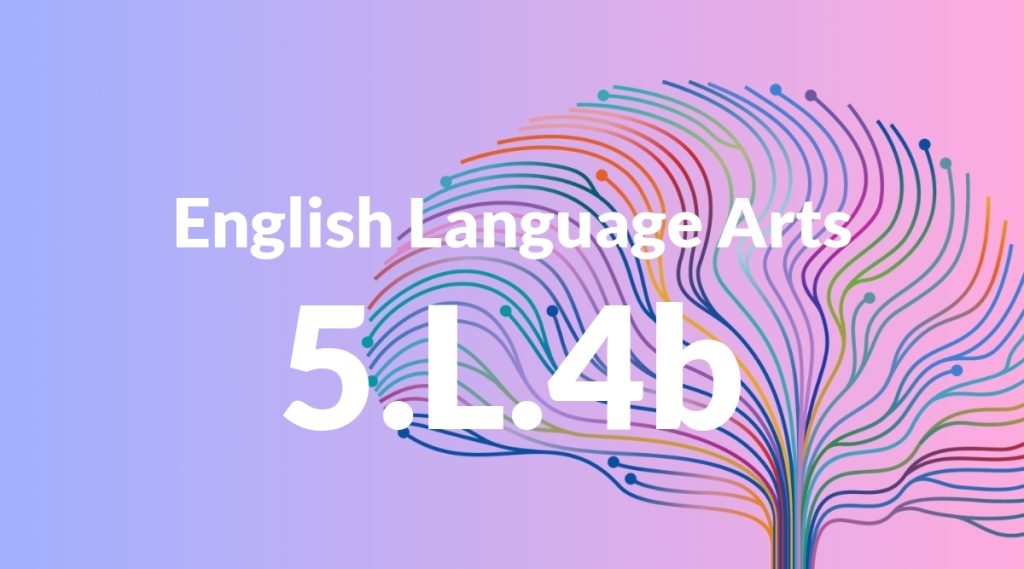Standard: 5.L.4b – Use common, grade-appropriate Greek and Latin affixes and roots as clues to the meaning of a word (e.g., photograph, photosynthesis).
Grade level: Grade 5
Subject: English Language Arts
Domain: Language
Teacher Overview
This standard focuses on helping students use Greek and Latin roots and affixes to understand the meanings of new words. This skill is crucial for expanding vocabulary and improving reading comprehension. By recognizing common roots and affixes, students can make educated guesses about the meanings of unfamiliar words, which is a valuable skill across all subjects. Students should already know what prefixes, suffixes, and root words are. They should also be familiar with some common English words that have Greek and Latin roots.
After mastering this standard, students will be able to decode more complex words and improve their reading comprehension and vocabulary. They will be better prepared for advanced language studies and other subjects that require strong reading skills.
Common Misconception 1
One common misconception is that students might think all unfamiliar words can be decoded using Greek and Latin roots. This is incorrect because while many English words do have these roots, not all do. Some words come from other languages or have evolved in ways that make their meanings less obvious.
Intervention 1
To address this misconception, provide students with a variety of words and have them practice identifying which ones can be decoded using Greek and Latin roots and which ones cannot. Discuss the origins of the words and why some do not fit the pattern.
Common Misconception 2
Another misconception is that knowing the root alone is enough to understand the full meaning of a word. However, the root is just one part of the word, and context clues are also needed to fully understand its meaning.
Intervention 2
Encourage students to use context clues in addition to root analysis. Provide exercises where students must use both the root and the context of a sentence to determine the meaning of a word.
Prerequisite Knowledge
Students should have a basic understanding of what prefixes, suffixes, and root words are, as well as some familiarity with common English words derived from Greek and Latin roots.
Subsequent Knowledge
After mastering this standard, students will be able to decode more complex words and improve their reading comprehension and vocabulary across various subjects. They will also be better prepared for advanced language studies in higher grades.
Instructional Activities
- Create word maps that show the relationships between words with common roots.
- Play matching games where students pair words with their Greek or Latin roots.
- Have students write sentences using words with common roots and affixes.
- Conduct a root word scavenger hunt in reading passages.
- Use flashcards to practice identifying roots and affixes.




